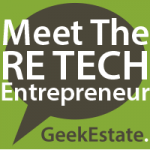Athletic field management is a never ending job for many Athletic Directors. Have you ever wondered what goes into managing your kid’s Little League or high school fields? Here are some great athletic field management tips for the professionals out there looking for some help.
Increasing turf density in Northeast US athletic fields
Soil oxygen, moisture, basic fertility and seeding are all critical components for increasing turf density on athletic fields. If your soil test indicates that the pH, phosphorus, potassium, organic matter & CEC are within guidelines you are in good shape. Should any of these items be off, adjust your program to amend the soil over time. If the soil test indicates conditions are extremely poor, you may need to do things sooner.
You should take a soil test every 3-4 years. Starting in Late August – early September start biweekly overseeding the high use areas. We prefer straight, blue tag, turf type tall fescues (TTTF) with highly rated varieties for our area. You can use 50 lbs. per field, per service and “feed the chickens.” I have had field managers say they thought I was crazy before they saw the results. Now they overseed all the time.
Now we need air! After your fall sports schedule ends, we recommend double-pass aeration & slice seeding. In Late May thru early September we also like to Vertiquake (decompact) to 6” to increase the oxygen level to the roots and increase drainage. This has very little impact on the playing surface so it will have little (if any) effect on playability of the field. Remember that if the soil oxygen level is less than 10% your turf will begin to suffer, and so will the high use areas of your fields.
Topdressing is an important part of increasing the soil biology and helps to smooth out the playing surface. We prefer to use a 50/50, screened soil/compost mix during the slice seeding.
Fall overseeding is critical in keeping your turf density high. So, go out there and “feed the chickens!”
Building the soil profile in your athletic fields
As we move away from synthetic fertilizers and use less herbicides and pesticides it becomes more important to increase the soil biology. Active soil biology is essential to sustain plant life. Healthy soil is full of life where organic matter and nutrients are recycled. The importance of keeping the organic matter and oxygen levels up in your soil can’t be overstated. That’s why we topdress and aerate to increase the soil life that provides the nutrients to the turf.
We have finished our third year using our Soil Smart program on residential lawns and a few athletic fields. The results are impressive considering we’re using 75% less pesticides. The Soil Smart program adds biology in the form of bacteria & fungi to the soil profile. This helps to break down organic material and produces nutrients in the root zone. We expect to continue to expand our Soil Smart program into athletic fields as there is more pressure to become more sustainable while increasing the turf density by improving the soil profile.
 Low spots must be a high priority
Low spots must be a high priority
The goal of every sportsturf manager is to have smooth, safe surfaces for play. Athletic fields are dynamic and constantly change due to activity pressure, weather, drainage, disease and damage. It’s important to address deviations on the field, low or high, that will affect play and, more importantly, safety.
Ballfield lips should be addressed every fall. Goal areas should be renovated by rototilling, adding soil, seed & fertilizer and covered with a grow tarp in November. Worn areas should be topdressed with a soil/compost mix, seeded and strawed if necessary.
In early spring, try to get your fields mowed to even them out after the winter growth. This is especially true for the ballfields. Many times these spots get ignored until a player goes down and their parents are there. Then the phone calls begin. So, talk to the guys who mow to help identify these areas and get them repaired.
Irrigating athletic fields…it’s not all good
While there are many benefits of irrigating athletic fields, there are also caveats to understand.
The benefits are obvious in being able to water in fertilizers or before or after a pesticide or herbicide application. Reducing hardness and cooling the turf are important as well. Irrigating areas after seeding can speed up germination. Watering in infield mix prior to a game on a ballfield makes the infield more playable.
The amount of water and the timing are the foundation of most of the issues with irrigation. Watering too frequently can cause shallow root growth, leeching of nutrients, and can increase weeds and diseases. Overwatering can also cause micronutrients like calcium & magnesium to build up to levels that cause compaction and turf nutrient uptake issues.
So, when do I water, Mr. Wizard? Start early in the morning (3-4 AM). On northeast clay-based fields, if you can pull a 3-4” plug with a soil probe, chances are there’s enough moisture. During hot & dry periods you can consider adding ¾” to 1” of water each service. Maybe two times per week. Be brave and resist watering every day using small amounts. Think deep and infrequent watering.
Managing multiple grass species on the same athletic field
Few athletic fields have only one species and most have many species and multiple cultivars within that species. Sometimes managing fields with many species and cultivars can be like herding cats.
Weather and fertility will affect species and cultivars differently making your field look like a mosaic. On fields like these my thinking involves establishing basic fertility. Then you need to choose the best species and cultivars to slice seed and overseed on these fields.
In central PA it will involve turf type tall fescue (TTTF) or perennial ryegrass. About 5 years ago I switched the fields I help to manage to slice seeding with TTTF and have never questioned that decision. While perennial rye will germinate a few days faster and will mature a few weeks faster than TTTF, most all other characteristics favor TTTF. Darwinism may tell you that natural selection will take over and the stronger will survive. While that may hold true for a home lawn it is less viable on an athletic field undergoing wear and stress.
So, it becomes inherent to the turf manager to reintroduce the species and cultivars that work on his fields. This normally takes place starting in late August with over seeding and ends with aeration and slice seeding at the close of fall sports. After 3-4 years of seeding the preferred species your field will become easier to manage and more playable for your teams.
If you’d like to learn more about how to care for an athletic field you manage, please Contact Us.
The post Athletic Field Management appeared first on Tomlinson Bomberger.
from Tomlinson Bomberger https://ift.tt/2lEdWRL

 The topic of Geek Estate Mastermind Newsletter #35 was Car Buying, and the VIP Buyer/Seller Real Estate Experience. For the first time since 2012, I’m a car owner again. I shared some observations from the car buying process, and added a real estate lens to the topic. At the end of the day, I believe the future of the real estate industry will revolve around delivering an unparalleled VIP experience. That’s the best, and only, differentiator there is against consumers choosing a friend or family member.
The topic of Geek Estate Mastermind Newsletter #35 was Car Buying, and the VIP Buyer/Seller Real Estate Experience. For the first time since 2012, I’m a car owner again. I shared some observations from the car buying process, and added a real estate lens to the topic. At the end of the day, I believe the future of the real estate industry will revolve around delivering an unparalleled VIP experience. That’s the best, and only, differentiator there is against consumers choosing a friend or family member. Photo by
Photo by  Photo by
Photo by 





 I’ve written about
I’ve written about 

 Low spots must be a high priority
Low spots must be a high priority



 In our latest real estate tech entrepreneur interview, we’re speaking with Tom Owen, co-founder of
In our latest real estate tech entrepreneur interview, we’re speaking with Tom Owen, co-founder of 
 We’re constantly looking for great real estate tech entrepreneurs to feature. If that’s you,
We’re constantly looking for great real estate tech entrepreneurs to feature. If that’s you, 



 In our latest real estate tech founder interview, we’re speaking with Brian Bair from Offerpad. He’s the co-founder and co-CEO of
In our latest real estate tech founder interview, we’re speaking with Brian Bair from Offerpad. He’s the co-founder and co-CEO of 
